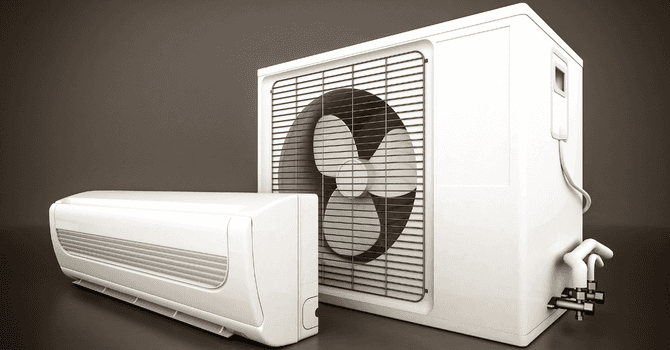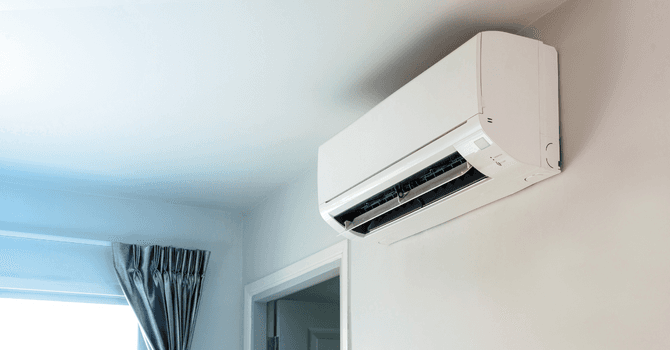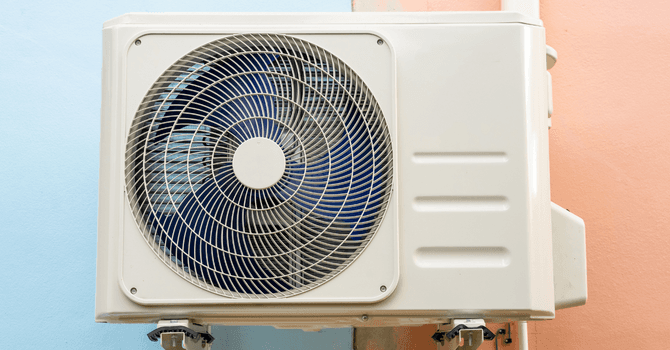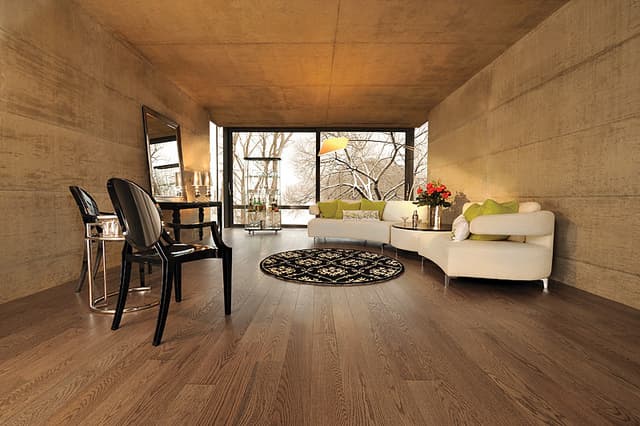Everything About the Venmar Air Exchanger
By Editorial Team
Updated on April 17, 2024

The majority of the population is unaware that the air they breathe inside their home isn’t that great.
With time, your home can quickly become the root cause of real problems. Improving air quality is paramount, and that’s why we’ll delve into the must-know facts about the Venmar air exchanger.
What’s an Air Exchanger?

Source: Canva
Everyone’s probably heard of an air exchanger at least once in their life. Though the name of this system pretty much defines its use, its function does go beyond the straightforward “pushes stale air outside your home and circulates fresh air from outside.”
As mentioned in the St-Maurice weekly, “An air exchanger is basically a box with two intake and exhaust ports. Inside the casing, there’s a fan that sucks in the stale inside air through one intake valve and exhausts it outside via the corresponding exhaust valve. Meanwhile, a second fan sucks in fresh outside air through another intake valve and circulates it inside the household’s ductwork via the corresponding exhaust valve.”
Again, according to the St-Maurice weekly, air exchangers can very well be connected to a heating system and the other way around, in case you’re faced with such a need.
To know more about the various ways you can maintain good indoor air quality, the following articles might be of interest:
What’s its Purpose?

Source: Canva
Function
This invention was intended to renew air and control the amount of mould that can spread through a home. Given the quality of materials used to build houses, just as well as the winter factor, a period during which warm air must be kept inside, similar to cold air during the summer, humidity has nowhere to go and ends up stuck within the dwelling’s core.
Problems
Unfortunately, if the issues related to a lack of air renewal aren’t tackled from the get-go, you’re exposing yourself to big problems, health-wise. In fact, as mentioned on the Venmar website, an air exchanger eliminates excess humidity and airborne pollutants. Polluted air is found nearly everywhere: bedrooms, living room, kitchen, basement, bathroom, garage, office, and attic.
We don’t ever talk about it enough, as such, basements and other areas in a home are often overlooked and aren’t aired out properly. Though it often constitutes the less frequented area in a house (though there are some exceptions), it’s still a fact that neglecting maintenance can be a contributing factor to a whole other set of issues.
To know more, check out our article about the ways to effectively ventilate a basement.
How Does an Air Exchanger Work

Source: Canva
An air exchanger consists of a propeller fitted inside a casing to promote air circulation. The rotor circulates the air inside the room in which it’s found, but also throughout the rest of the house.
This casing has two filters in the shape of metallic grilles that absorb airborne grime and organisms that pollute the air. Once filtered, the home’s warm air is replaced by cold air from outside. The other way around as well. Once winter sets in, the air exchanger’s shutter closes to prevent cold air from seeping in and then increases the ambient temperature due to insulation material found inside the walls.
Air Exchanger Features

Source: Canva
Exchange Rate
The exchange rate stands for the system’s cold air intake capacity according to a precise rhythm. Venmar systems are measured by four exchange rate levels that are calculated in CFM, which is the flow rate in cubic feet per minute. As detailed on the Venmar website, their collection is as follows:
70 CFM and less;
80 to 140 CFM;
150 to 160 CFM;
180 CFM and more.
Recovery Type
Just like there are a lot of different types of cars, there are various types of products. For ventilation units, there are three types of systems:
HVR systems;
ERV systems;
Exchange systems.
If you want to know more about the difference between recovery types—exchanger, HRV, and ERV—check out our article on the subject matter. (French only)
HRV Air Exchanger
A heat recovery ventilator (HRV) is equipped with a lot of heat-related features:
The propylene heat recovery core exhausts excess humidity, preventing not only health-related problems but also damage caused to window frames and walls.
Exhausts stale inside air and supplies inside with fresh air.
The filter system prevents some exterior pollutants from seeping into the house and ensures ambient airflow by exhausting inside pollutants outside.
ERV Air Exchanger
The second system sold by Venmar is equipped with energy recovery technology. This means that savings will accrue mostly in terms of energy:
Ensures heat and energy transfer from one airflow to the next and is a good humidity level control system.
For year-round use and for air-conditioned houses with an elevated level of exterior humidity.
Filters a part of the pollutants outside, which prevents these from seeping into the house and ensures an ambient air exchange by exhausting indoor pollutants outside.
Exchange Recovery
For more traditional individuals, this model works due to a serpentine-like compression air exchanger:
It’s a heat exchange recovery system with a built-in compressor that has fresh air, heat and air conditioning supply functions, and depending on the selected model, dehumidification and air filtration too.
Has two independent ventilation ducts:The first exhaust stale inside air;The second pulls in fresh outside air, filters it, heats it, and disperses it within the home.
Ventilates bathrooms without the possibility of odour build-up.
Renews inside air up to 45 times a day.
Ensures near-perfect air quality.
Eliminates outside or inside odours (cigarette, frying).
Eliminates contaminants and allergenic components (pollen, animal hair, and dust).
Collections

Source: Canva
Venmar air exchangers can be broken down into three distinct collections, each with their own peculiarities:
Venmar;
Venmar Light Commercial;
Venmar AVS.
Are you looking for experts for your air conditioning or heating project?
Fill in this form to be connected with top-rated contractors!
Venmar
The products sold under this brand are designed for residential needs. As mentioned on the Venmar website, these air enhancers can ventilate between 30 and 104 CFM. As for warranty, it varies between 1 to 2 years. On the other hand, the core and thermal wheel warranty isn’t set in stone but can result in a lifetime warranty. The two models available under this brand are rather small, which means they can be positioned just about anywhere.
EVO5 500 HRV | 2,700 sq. ft. | 1 year, extend warranty by 1 year by registering product online | Limited lifetime | 95 cm * 44 cm * 31 cm | 50-94 CFM |
EVO5 700 HRV HEPA | 3,000 sq. ft. | 1 year, extend warranty by 1 year by registering product online | Limited lifetime | 100 cm * 31 cm * 44 cm | 50-104 CFM |
The information detailed in the chart was taken from the specification sheet.
Venmar Light Commercial
As depicted above, the products featured under the “Venmar” brand are more profitable for houses with restricted square footage. As for “Venmar Light Commercial” products, their sole purposes are to enhance and regulate temperatures inside light commercial spaces or very large houses.
6LC ERV | For light commercial spaces or very large houses | 2 years | 5 years | 71 cm * 86 cm * 62 cm | 560-690 cubic feet per minute |
6LC HRV | For light commercial spaces or very large houses | 2 years | 15 years | 71 cm * 86 cm * 62 cm | 560-690 cubic feet per minute |
12LC ERV | Light commercial spaces | 2 years | 5 years | 105 cm * 86 cm * 62 cm | 767-1,026 cubic feet per minute |
12LC HRV | Light commercial spaces | 2 years | 15 years | 105 cm * 86 cm * 62 cm | 767-1,026 cubic feet per minute |
Information was taken from the product specification sheet.
Venmar AVS
As for the Venmar AVS collection, it serves just about every type of building (light, medium, and big houses). The products featured under this brand can also be placed in difficult-to-reach areas, in apartments, on ceilings, in residential buildings, etc.
K Series | - | ERV/HRV | ERV: 5 yearsHRV: 5 years | ERV: 5 yearsHRV: Limited Lifetime | These are the smallest units according to Venmar’s product descriptions. It can be discretely placed in hard-to-reach areas. It’s also their lightest and easiest-to-move model.40 cm * 39 cm * 47 cm | 35-90 CFM (depending on the model) |
S Series | Can be installed and used in high-rise residential towers | ERV | 5 years | 5 years | It’s the thinnest model according to the brand’s (Venmar AVS) specification sheet. It was designed to be easily installed on ceilings.69 cm * 51 cm * 23 cm | 50-102 CFM (depending on the model) |
N Series | - | ERV/HRV | EVR: 5 yearsHRV: 5 years | EVR: 5 yearsHRV: Limited Lifetime | 53 cm * 41 cm * 55 cm | 35-150 CFM (depending on the model) |
Solo | Large houses | HRV | 5 years | Limited Lifetime | 89 cm * 44 cm * 43 cm | 82-192 CFM (depending on the model) |
X Series | Large spaces | HRV/ERV | ERV: 5 yearsHRV: 5 years | ERV: 10 yearsHRV: Limited Lifetime | 82 cm * 51 cm * 84 cm | 50-252 CFM (depending on the model) |
Information was taken from the Venmar brand specification sheet.
Oftentimes, the tinkerers among us will DIY the installation given that the cost of labour and materials have skyrocketed due to the recent public health crisis. As such, this article might pique your interest:
Get 3 quotes for your air conditioning and heating project
RenoQuotes.com can help you get quotes for your air conditioning and heating project. If you submit your project to us, we’ll put you in contact with top-rated contractors. Fill in the form on the homepage (it only takes a few minutes), and you will get estimates from trusted professionals.
Dial 1-844 828-1588 to speak with one of our customer service representatives.
Looking for something else?
Related articles
The latest industry news, interviews, technologies, and resources.

Léa Plourde-Archer
•07 Nov 2023
Deciding to replace your current floor is a process that should not be taken lightly. Not only is it a major financial investment, but it also takes time. Which material is best? Which colour?

Editorial Team
•15 Dec 2023
Floors are made up of several layers. Beyond the walking surface, meaning the flooring, the strength and durability of the floor rely on the structure of the house, joists, subfloor, and underlayment. When building or renovating a floor, you have to think about each of these layers, as they play a much more important role than one may know.

Editorial Team
•07 Nov 2023
If you haven’t heard of a wet room before, we recommend you start paying attention to this growing trend. The wet room is becoming more desirable as a minimalist, one-of-a-kind feature that works to add value to your home.

Editorial Team
•07 Nov 2023
Window shutters are a classic choice when it comes to indoor and outdoor home decor. They offer a hint of sophistication while increasing the privacy of your home.

Editorial Team
•05 Dec 2025
Energy efficiency in a home is a key issue, especially during the winter months, and even more so if it is an older structure. Having effective insulation is frequently listed as the first step to reducing heating costs.